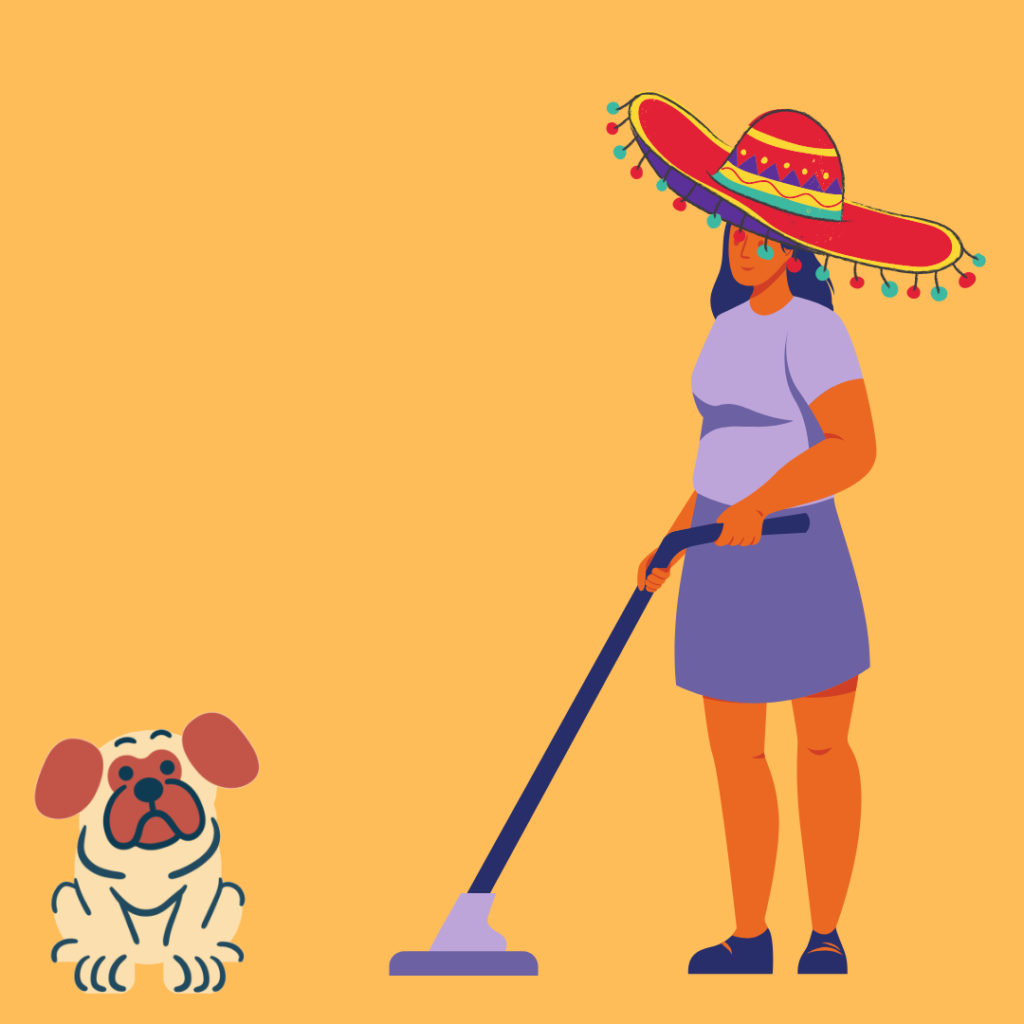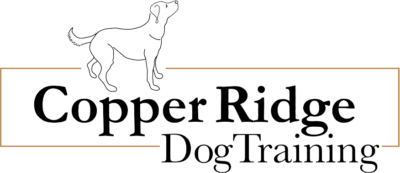Let’s talk about those dogs that seem bullet-proof around loud noises and lots of distractions. You know, the dogs that could take a nap in the middle of a thunderstorm or that could walk through a crowded market without flinching at all of the people and food passing by. Those dogs are the envy of every dog owner that struggles with a fearful or nervous dog.
But those dogs didn’t just happen to turn out like that. Yes, genetics can have a huge impact on your dog’s confidence and overall demeanor, so let’s not take that out of the equation entirely. But even the best-bred dog, if left without any training or intentional experiences, would likely struggle if thrown into a crowd of people and noises.
So how do you get your nervous dog to be calm, relaxed, and confident in situations where she currently struggles?

Practice!
As with any new skill, you need to practice. And practice a lot, my friend.
But this doesn’t mean throwing a leash on your dog and dragging her to the farmer’s market every weekend until s he “figures it out”. Please don’t do that – it’ll cause frustration for both you and your dog, and won’t do anything productive for building up trust in your relationship.
No, what we’re talking about is setting up carefully planned situations (aka controlled experiences) for your dog. You want these experiences to test your dog’s comfort level, but in such a way that you know exactly what the outcome will be. And it’s easier than it sounds, so anyone can do it with a little planning.
What is a Controlled Experience

A controlled experience is one where you know exactly what kind of situation you’re about to put your dog into that serves a specific purpose in her training. You will want to plan who or what you’re going to run into, what distractions will be present, and already have a plan for how you will help your dog through those moments. The best part? Your dog has no idea any of this planning is happening, so you’ll be able to see her true response and help her work through any issues that arise.
A few examples might look like this:
- Your dog barks and lunges at other dogs on leash, and it’s really embarrassing and frustrating for you. So you ask your neighbor to walk by your house at 2:30 this afternoon when you will also coincidentally be outside with your dog on leash. So at 2:30, you and your dog are enjoying the smells of the yard when your neighbor and their dog stroll by. You knew they were coming, so you’re ready and see them before your dog does. She starts growling and getting ready to lunge, but you’re ready and can give her a quick correction, redirect her attention, and reward her if she makes a better choice.
- Your dog is afraid of new people and will bark at anyone that walks up to the house. You see the mailman parking his car and know that he’ll be here in five minutes. That’s just enough time to put your dog on her place bed to relax, all the while knowing that you’re about to help her through a pretty big fear. As soon as she hears the mailman walking up the front steps, your pup starts barking and running to the door. You calmly tell her “no,” walk her back over to her bed, and allow her to calm herself on her bed. Practice this every day, and your nervous dog will soon gain confidence in understanding exactly what should happen when she’s uncomfortable with someone approaching the front door.
In both of these scenarios, you knew exactly what was going to happen, and you were prepared to address your dog’s response calmly. When you aren’t prepared for these encounters, they can feel rally chaotic and overwhelming. But when you know what’s coming, you can act with confidence and provide the best information possible to your dog. And this is how we start turning your nervous dog into a confident one that can handle increasingly stressful situations.
How to Setup Controlled Experiences

So how can you setup a controlled experience for your dog?
First, you need to determine what your dog’s triggers are. What does she struggle with? What makes her really uncomfortable? What gets her so excited that she loses all focus and seems to forget everything you’ve ever taught her?

Once you have that figured out, you’ll want to plan a time to expose her to that trigger. Pick one trigger at a time to work on so that you don’t overwhelm her with too much all at once. So if your dog struggles with vacuums, strangers, and people wearing hats, don’t have your co-worker walk in wearing a sombrero while chasing the vacuum around your house. Start small, and just pick one of those things to overcome.
So let’s say you want to work on building your dog’s confidence around the vacuum. One technique is to bring the vacuum out and just set it in the corner of the room while you play with your dog’s favorite toy. The “scary” thing will be there, and she’ll likely side-eye it twenty times during your play session. But she’ll start to see that the monster in the corner isn’t trying to hurt her, and may even forget about it as she plays with you.
The next time, perhaps you’ll try throwing her favorite treats on the floor around the vacuum and allow her to explore as she’s comfortable. The next time? Try turning the vacuum on , but leave it standing still in the corner again so that she can experience the sound without any movement.
And you slowly allow her these positive experiences so that she can see and understand that the vacuum is just a thing that happens sometimes, and she has no reason to fear it. We know it won’t hurt her, but she needs these controlled experiences to learn that for herself.
See it in Practice

In the video below, we have setup a controlled experience for one of our training dogs, Mando. Mando is a very nervous dog around new people. We’re talking so nervous that he would run to the other side of the room to avoid them. So we had our work cut out for us.
Now it’s important to note a couple of things when working through fears with your nervous dog:
- Do not force your dog to interact with the thing she’s afraid of. In Mando’s case, we aren’t forcing him to meet anyone. In fact, we’re telling people to ignore him. This will help him feel safe by removing all pressure of a person moving into his space. We simply want him to feel relaxed in the presence of new people.
- Keep your dog on leash during these controlled experiences. While you don’t want your dog to interact with the “scary” thing, you also don’t want her to run away and miss the experience altogether (or charge at the thing she’s afraid of, making this an ineffective training opportunity).
- No matter what your dog’s response is, stay calm and confident. You prepared beforehand and you have a plan to help her if she struggles, and reward her if she does a great job. Your confidence will rub off on her – if she sees that you’re not worried about the situation, she will be much more likely to feed off of that calm energy. If she sees that you’re nervous or panicking, she will absolutely follow suit.
Conclusion
We know how hard it can be to watch a confident dog stroll around in situations that would put your nervous dog in fight or flight mode. It’s frustrating and overwhelming, and you feel so deeply for your dog and wish you could just give her the magic pill that solves all of her fears. But that pill doesn’t exist.
What does exist is a very clear training plan to start safely exposing your dog to situations that she struggles in. Fear and anxiety take time to overcome. And the best thing you can do for a nervous dog is provide her with safe and controlled experiences where you can show her how to work through her fears.
Are you ready to take that next step for your nervous dog? Does all of this sound great, and you want to help her succeed, but you still aren’t sure where to start? Or perhaps you can see the goal ahead, but want someone to cheer you on and support you on your journey. Reach out to us! We’ll talk through your dog’s behaviors together and help you come up with a plan to build her confidence, set up controlled experiences, and prepare her for all of life’s challenges.
